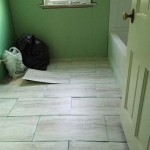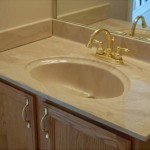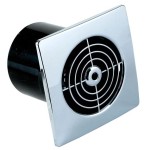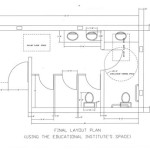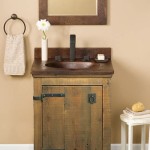Bathroom Linen Closet Depth: A Comprehensive Guide
The bathroom linen closet is a crucial storage element in any home, offering a dedicated space for towels, washcloths, toiletries, and other bathroom essentials. The functionality and efficiency of this closet greatly depend on its dimensions, particularly its depth. The optimal bathroom linen closet depth is a significant factor that balances space utilization, accessibility, and overall aesthetics. Consequently, careful consideration of depth is paramount during bathroom design or renovation.
This article provides a detailed exploration of bathroom linen closet depth, examining standard measurements, factors that influence depth selection, and strategies for maximizing storage potential. Understanding these aspects will empower homeowners and designers to make informed decisions that result in a practical and well-organized bathroom space.
Standard Bathroom Linen Closet Depths
While custom designs allow for flexibility, standard depths offer a convenient starting point for planning a bathroom linen closet. The most common depths typically fall within a specific range, accommodating the size and shape of typical bathroom items. These standardized options contribute to ease of construction and cost-effectiveness.
Generally, bathroom linen closets range in depth from 12 inches to 24 inches. A 12-inch depth is often considered the minimum, suitable for storing folded towels and smaller toiletries. This shallower depth is beneficial for smaller bathrooms where space is limited, as it minimizes the closet's footprint while still providing essential storage. However, it may not be sufficient for larger items or bulky linens.
A depth of 16 to 18 inches is a popular compromise, offering a balance between storage capacity and space efficiency. This depth can comfortably accommodate folded towels, washcloths, and many standard-sized toiletries. It provides enough room to prevent items from being tightly packed, allowing for easier access and better organization.
A 24-inch depth represents the deepest standard option and is ideal for larger bathrooms or those requiring maximum storage capacity. This depth can accommodate larger items, such as stacks of blankets, spare bedding, and bulk quantities of toiletries. However, it is crucial to consider the reach distance when selecting this depth, as items at the back of the closet may be difficult to access without bending or stretching.
Deviation from these standard depths is possible, but it often requires custom construction, increasing costs. Therefore, carefully evaluating storage needs and bathroom dimensions is crucial before opting for a non-standard depth.
Factors Influencing Bathroom Linen Closet Depth Selection
Several factors influence the optimal depth of a bathroom linen closet, requiring a holistic approach to the selection process. These factors encompass spatial constraints, storage requirements, and user accessibility, all of which contribute to the overall functionality and usability of the closet.
Bathroom Size and Layout: The primary determinant of closet depth is the available space within the bathroom. Smaller bathrooms necessitate shallower closets to avoid overcrowding and maintain comfortable circulation. Conversely, larger bathrooms offer greater flexibility in depth selection, allowing for more substantial storage capacity. The layout of the bathroom, including the placement of fixtures such as the toilet, sink, and shower, must also be considered to ensure that the closet does not obstruct movement or access to these essential elements.
Storage Needs and Inventory: The quantity and type of items to be stored significantly impact the required depth. If the closet is primarily intended for storing folded towels and washcloths, a shallower depth may suffice. However, if it must also accommodate larger items such as blankets, spare bedding, or bulky toiletries, a deeper closet will be necessary. An inventory of intended storage items, including their dimensions, should be conducted to accurately assess storage needs and determine the appropriate depth.
User Accessibility and Ergonomics: The depth of the closet must be considered in relation to user reach and accessibility. A very deep closet can make it difficult to reach items stored at the back, particularly for individuals with limited mobility or shorter stature. Strategies such as adjustable shelves, pull-out baskets, or rotating organizers can mitigate this issue, but it is crucial to consider accessibility during the initial planning phase. The placement of shelves and the organization of items within the closet should also prioritize frequently used items, placing them within easy reach.
Door Style and Clearance: The type of door used for the linen closet can also influence the optimal depth. Inswing doors require clearance space within the bathroom, potentially limiting the depth of the closet. Sliding doors or pocket doors can be a space-saving alternative, allowing for a deeper closet without compromising circulation. The swing direction of the door should also be considered to ensure it does not interfere with other bathroom fixtures or traffic patterns.
Aesthetic Considerations: While functionality is paramount, the aesthetic appearance of the linen closet should also be considered. A closet that is disproportionately deep in relation to the overall bathroom design can appear bulky or intrusive. The chosen depth should complement the architectural style and décor of the bathroom, creating a cohesive and visually appealing space. The door style, hardware, and finish should also be carefully selected to enhance the overall aesthetic appeal.
Strategies for Maximizing Storage Potential in a Bathroom Linen Closet
Even with a well-chosen depth, the effectiveness of a bathroom linen closet hinges on efficient organization and utilization of available space. Implementing strategic organizational techniques can significantly enhance the storage potential of the closet, maximizing its functionality and convenience. These strategies involve optimizing shelf placement, utilizing storage accessories, and implementing effective folding techniques.
Adjustable Shelving: Adjustable shelves are a cornerstone of efficient closet organization, allowing for customization based on storage needs. The ability to adjust shelf height enables the creation of appropriately sized compartments for different items, minimizing wasted space. Closely spaced shelves are ideal for stacks of folded towels and washcloths, while wider spacing is suitable for taller items such as shampoo bottles or baskets. The flexibility of adjustable shelving ensures that the closet can adapt to changing storage requirements over time.
Vertical Dividers and Organizers: Vertical dividers are invaluable for maintaining order and preventing stacks of items from toppling over. They can be particularly useful for organizing folded towels, linens, or even clothing. These dividers create defined compartments, promoting neatness and facilitating easy access to individual items. Various types of vertical organizers are available, including freestanding dividers, shelf dividers, and drawer dividers. The choice depends on the specific storage needs and the configuration of the closet.
Baskets and Bins: Baskets and bins are essential for corralling smaller items and maximizing vertical space within the closet. They are perfect for storing toiletries, cleaning supplies, or even rolled-up towels. Clear plastic bins offer the advantage of visibility, allowing for easy identification of contents. Woven baskets provide a more aesthetically pleasing option, adding texture and visual interest to the closet. Labeling bins and baskets is crucial for maintaining organization and ensuring that items are easily located.
Door-Mounted Organizers: Utilizing the back of the closet door for storage is an effective way to maximize space, particularly in smaller bathrooms. Over-the-door organizers come in various styles, including pocket organizers, wire racks, and adjustable shelving units. These organizers are ideal for storing toiletries, hair styling tools, or cleaning supplies. They provide easy access to frequently used items without cluttering the shelves or countertops.
Rolling Carts and Pull-Out Shelves: For deeper closets, consider incorporating rolling carts or pull-out shelves to improve accessibility. These features allow for easy retrieval of items stored at the back of the closet without having to reach or bend. Rolling carts can be particularly useful for storing heavier items, such as bulk packs of toilet paper or cleaning supplies. Pull-out shelves provide a convenient way to access folded linens or toiletries, minimizing the risk of items falling or shifting.
Folding Techniques: Implementing efficient folding techniques can significantly increase the amount of storage space available in the linen closet. Folding towels and washcloths into compact, uniform shapes allows for more efficient stacking and maximizes shelf space. The KonMari method, which involves folding items vertically so that they stand upright, is a popular choice for maximizing visibility and accessibility. Consistent folding techniques also contribute to a more organized and visually appealing closet.
Regular Decluttering: Periodic decluttering is essential for maintaining an organized and functional linen closet. Remove items that are no longer used, expired, or damaged. Donate or discard unwanted items to free up space for essential items. A regular decluttering routine will prevent the closet from becoming overcrowded and ensure that items are easily accessible. It also provides an opportunity to reassess storage needs and adjust the organization system accordingly.
The optimal depth of a bathroom linen closet is a critical design consideration that balances storage needs, spatial constraints, and user accessibility. Understanding standard depth ranges, evaluating influencing factors, and implementing strategic organizational techniques are essential for creating a functional and visually appealing bathroom space. A well-planned linen closet contributes significantly to the overall organization and efficiency of the bathroom, enhancing the user experience and promoting a clutter-free environment.

13 5 In W X 9 D 67 H Bathroom Linen Cabinet White 832810mdx The Home Depot

Glacier Bay Shaker Style 16 In W X 12 D 62 25 H Linen Cabinet White 5348wwhd The Home Depot

How To Diy A Built In Linen Cabinet The Playbook

Home Decorators Collection Newport Pacific White Plywood Shaker Assembled Vanity Bath Kitchen Cabinet Soft Close Right 18 In W X 21 D 84 H Vlc182184r Npw The Depot

Pleasing Dimensions For A Linen Closet Home Decorating Design Forum Gardenweb Layout

Veikous 23 6 In W X 11 8 D 31 H Freestanding Bathroom Linen Cabinets With Adjustable Shelf And 4 Drawer Gray Hp0904 01gy The Home Depot

Teamson Home Glancy 15 In W X 13 D 63 H Bathroom Linen Storage Floor Cabinet With 2 Shutter Doors White Hdt588 The Depot

Easy Linen Closet Organization Ideas Julie Blanner

Vlc242184 Manhattan High Gloss White Vanity Linen Cabinet 24 X21 X Whole Supply

Linen Closet Dimensions Impressive Lovely Check More At Https Acticin Com 43903 Dimen Design Layout
Related Posts
